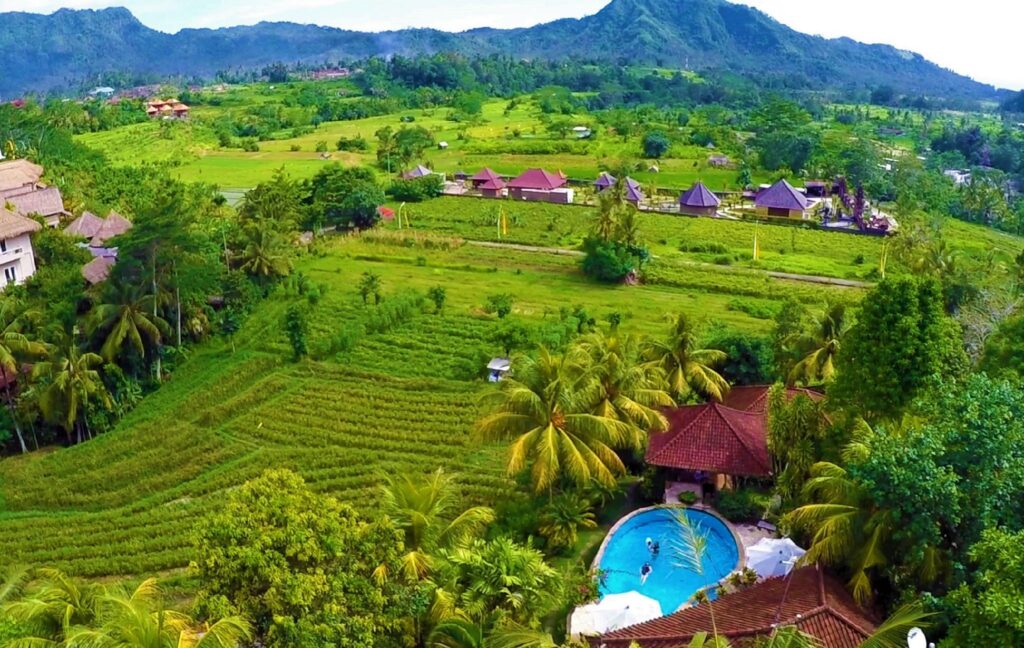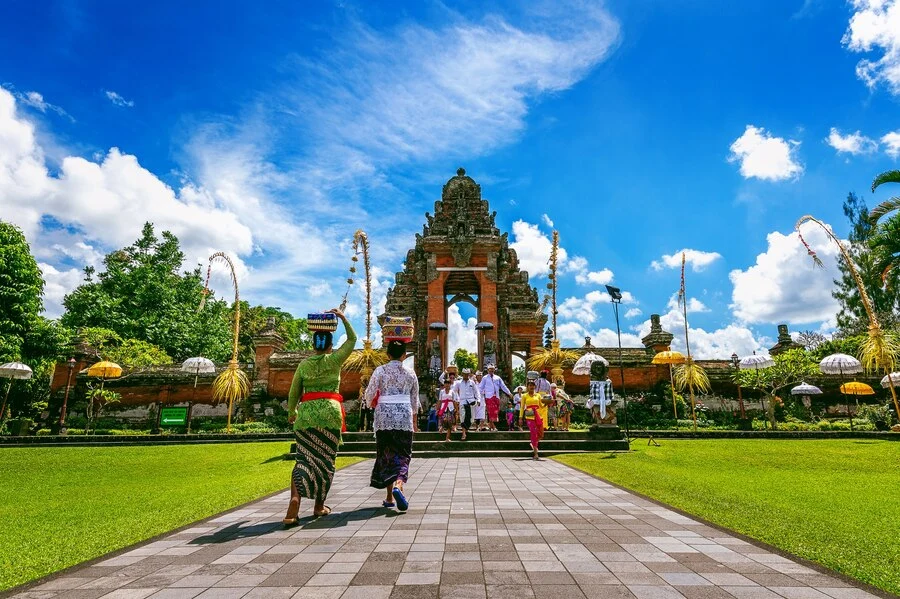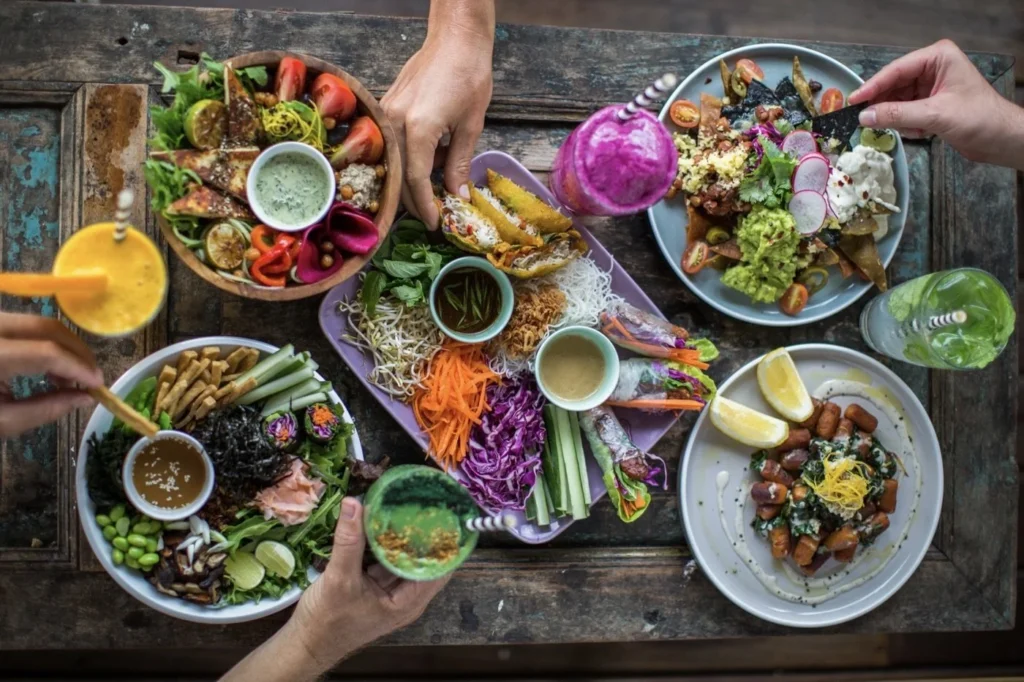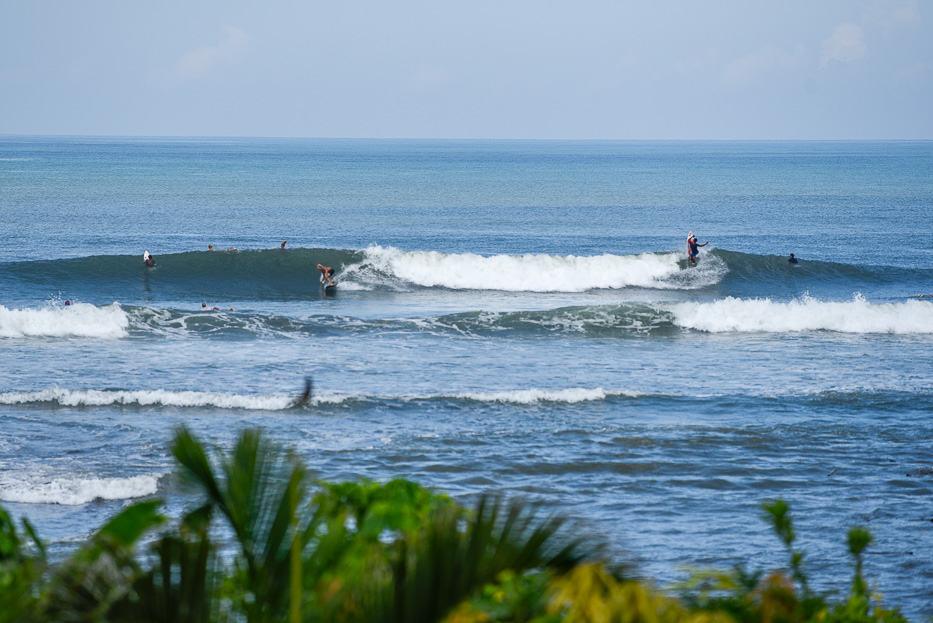Bali is known for its rich cultural traditions, and one of the most iconic and deeply spiritual practices you will see across the island is the daily offering of Canang Sari. These beautifully crafted offerings, placed in front of temples, homes, businesses, and even on sidewalks, are a symbol of gratitude, devotion, and balance in Balinese Hinduism.
Although these offerings may seem simple at first glance, they hold profound spiritual meaning and are an essential part of daily life in Bali. This article explores the meaning behind Canang Sari, how they are made, their symbolism, and their significance in Balinese culture.
1. What is Canang Sari?

Canang Sari is a small, intricate offering made from palm leaves, flowers, and other sacred items, placed as an expression of gratitude to the gods. The word Canang refers to the palm leaf basket that holds the offering, while Sari means essence or core, signifying the spiritual energy within the offering.
These offerings are placed multiple times a day in temples, shrines, doorways, and streets as a way to honor the gods and maintain harmony between humans, nature, and the divine. Unlike temple ceremonies that happen on special occasions, Canang Sari is a daily practice, reminding the Balinese people of their connection to the universe and their duty to keep spiritual balance in their lives.
Key Purposes of Canang Sari
- An offering of gratitude for blessings received
- A way to maintain balance in the spiritual and physical world
- A form of meditation and prayer for those who create and place them
- A ritual for protection from negative energies and bad spirits
It is common to see these offerings everywhere, from hotel entrances to street corners. Though they may seem like simple decorations to visitors, they carry deep spiritual significance for the Balinese people.
2. The Meaning Behind the Components of Canang Sari
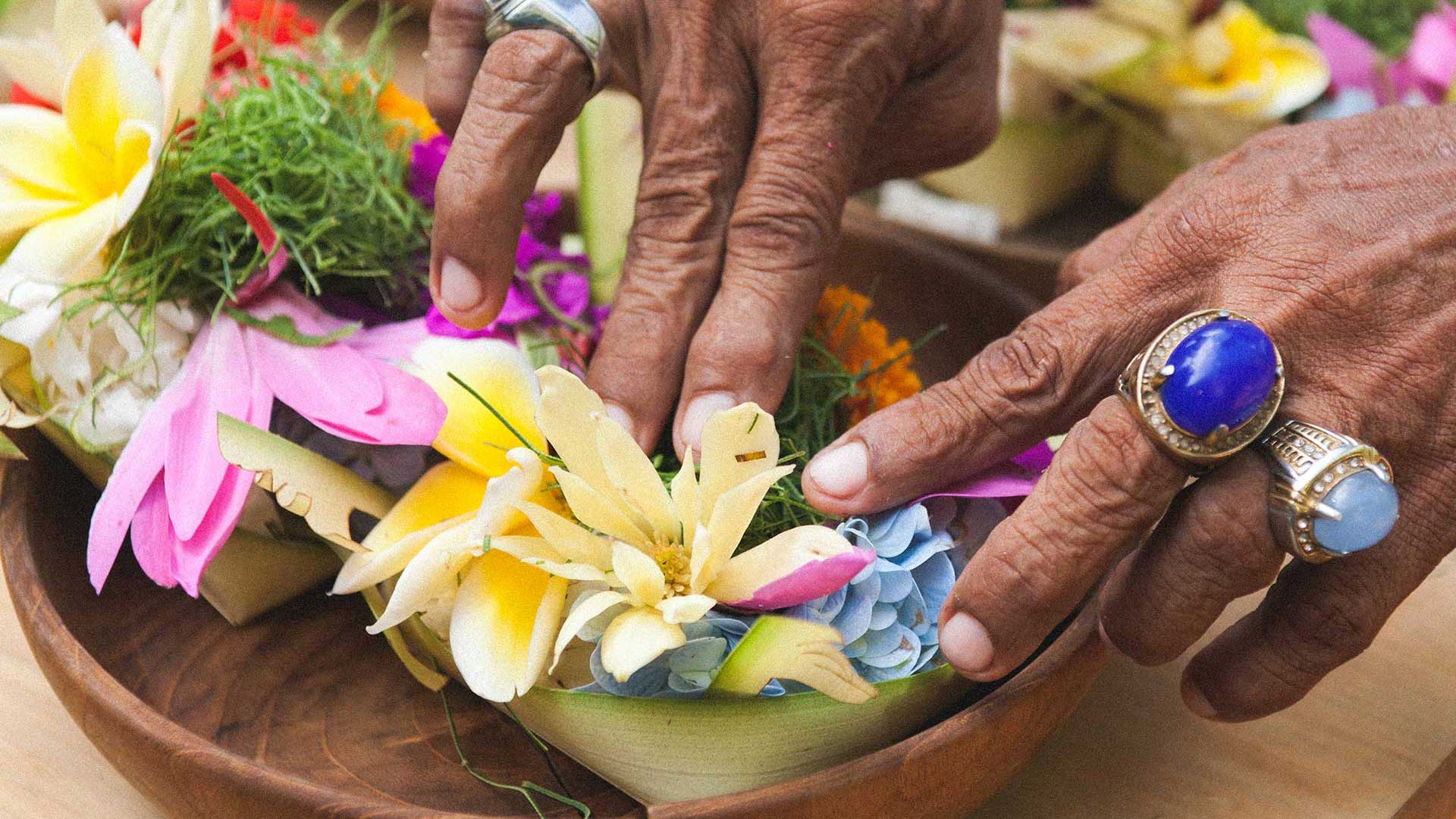
Each Canang Sari is carefully crafted using natural elements, each carrying a spiritual meaning. Though they may look simple, every item in the offering is chosen to represent different aspects of life and the divine.
Symbolism of Each Component
- The Palm Leaf Tray (Canang) – Represents human devotion and balance in life
- Flowers – Placed in specific directions to honor different deities:
- White (East) – Honors Iswara, the god of wisdom
- Red (South) – Represents Brahma, the god of creation
- Yellow (West) – Dedicated to Mahadeva, the god of prosperity
- Blue/Purple (North) – Symbolizes Vishnu, the god of preservation
- Betel Nut & Lime – Represents life energy and unity
- Rice & Food Items – Given as a sign of gratitude for sustenance
- Incense Stick (Dupa) – Used to carry prayers to the heavens when burned
Some families personalize their Canang Sari with extra offerings like money, candies, or cigarettes as a way to thank the gods for specific blessings.
3. How Canang Sari is Made & Offered
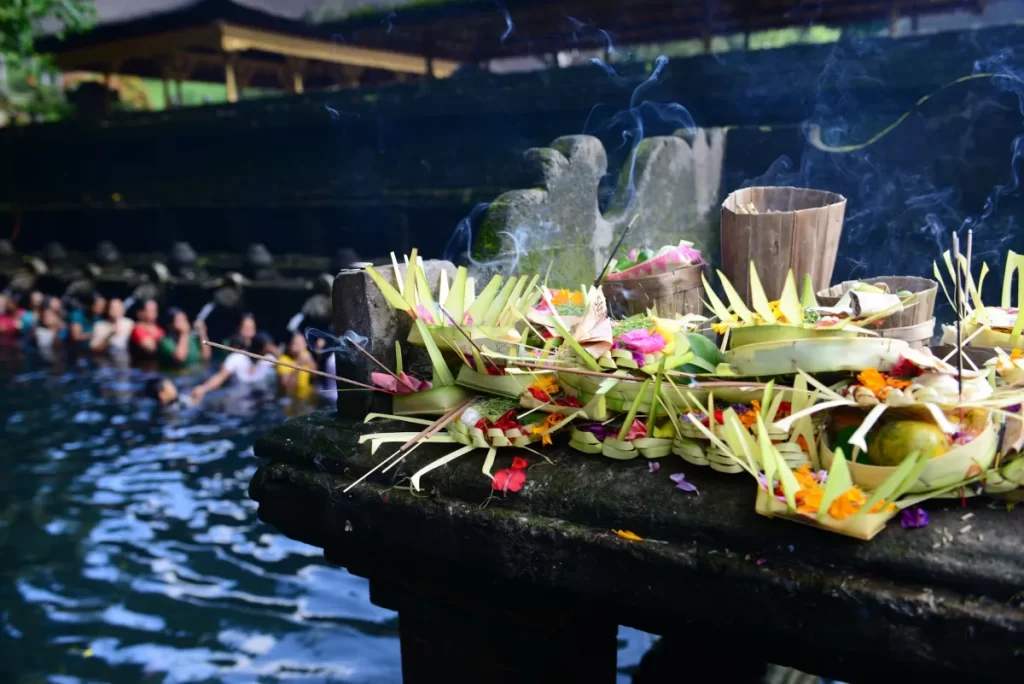
The process of creating Canang Sari is considered a sacred act of devotion, usually performed by Balinese women early in the morning. The act of arranging the flowers, preparing the offering, and placing it in front of temples or homes is a form of meditation and mindfulness.
Steps to Create & Offer Canang Sari
- Making the base – Palm leaves are woven into small square trays
- Arranging the flowers – Each flower color is placed in a specific direction to honor the gods
- Adding betel nut, rice & offerings – Extra elements like coins, food, and incense are placed inside
- Placing the offering – Canang Sari is placed at shrines, doorways, and sacred places
- Praying & burning incense – A short prayer is recited, and the incense is lit, allowing the smoke to carry the prayers to the gods
If you visit Bali, some temples and homestays offer Canang Sari workshops, where you can learn how to make your own offering and understand its spiritual significance.
4. Where & When to See Canang Sari in Bali
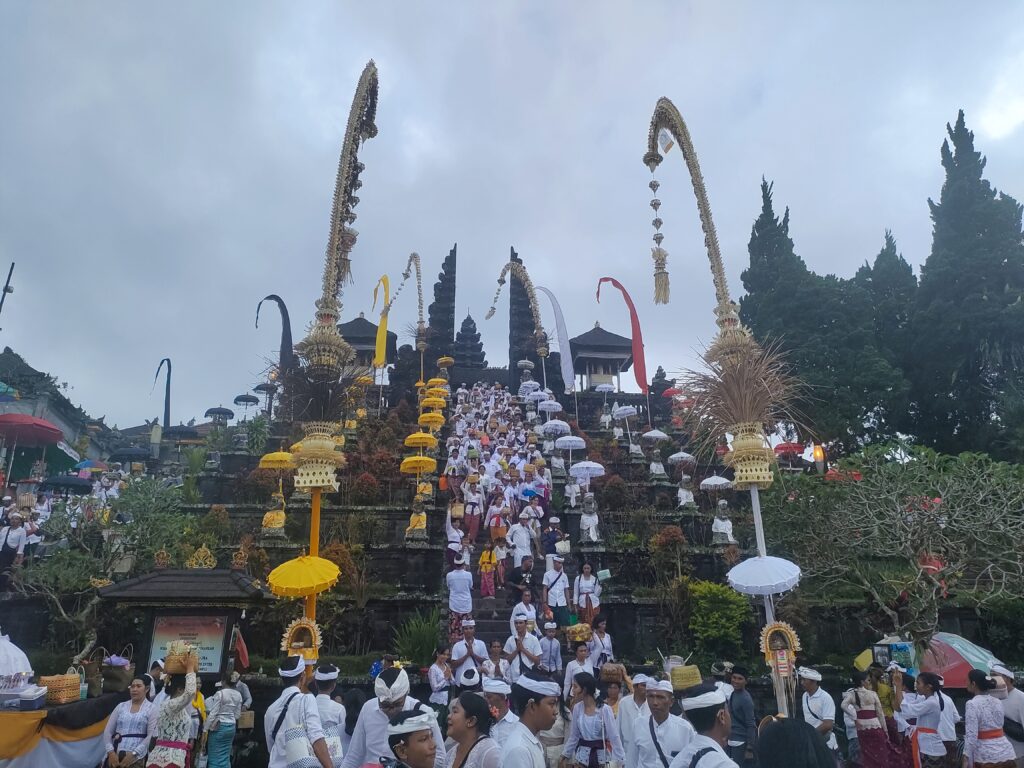
Canang Sari is seen everywhere in Bali, from homes and businesses to temples and roadsides. These offerings are usually placed at sunrise and sunset, ensuring spiritual balance throughout the day.
Best Places to Observe Canang Sari Rituals
- Pura Besakih (Mother Temple) – One of Bali’s most sacred temples, where daily offerings are performed
- Uluwatu Temple – Offers a beautiful view of Canang Sari placed along the cliffs
- Ubud Market & Traditional Homes – The heart of Bali’s spiritual culture, where offerings are placed in shops and doorways
- Balinese Hindu Ceremonies – Experience grand offerings during Galungan, Kuningan, and Nyepi festivals
For a deeper experience, visit a local Balinese household early in the morning and observe how Canang Sari is made and offered.
5. Best Accommodations for Experiencing Balinese Spiritual Culture
For travelers who want to immerse themselves in Balinese traditions, staying in a culturally rich resort or homestay allows for a deeper connection with the local way of life. These hotels offer spiritual activities, temple visits, and even Canang Sari-making classes.
Recommended Hotels & Resorts for a Spiritual Stay in Bali
📍 Ubud – Best for Cultural & Spiritual Retreats
- Fivelements Retreat Bali – A stunning eco-wellness retreat offering spiritual healing, meditation, and traditional Balinese purification rituals. Guests can participate in Canang Sari workshops and experience authentic Hindu traditions.
- Adiwana Resort Jembawan – A peaceful retreat in Ubud with yoga, meditation, and cultural programs. Guests can enjoy guided temple visits and experience Balinese ceremonies firsthand.
- Bambu Indah – A beautiful eco-lodge that provides an immersive experience into Balinese culture, including organic farming and daily offering rituals.
Why Canang Sari is More Than Just an Offering
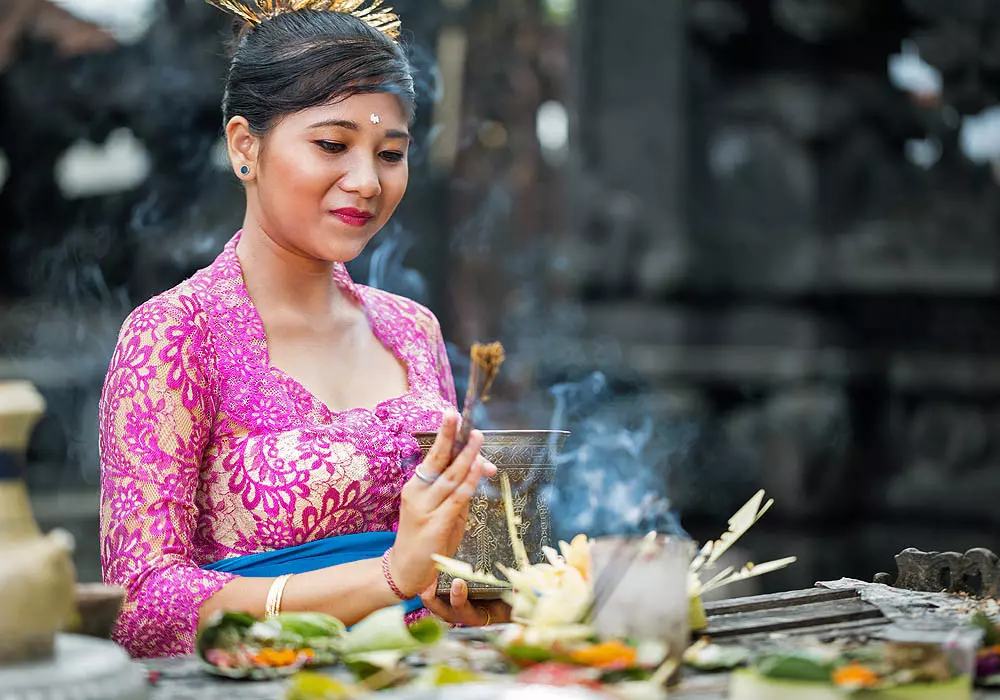
At first glance, Canang Sari may seem like just a simple flower arrangement, but it is one of the most powerful symbols of Bali’s unique blend of spirituality, culture, and daily devotion. The process of making and offering Canang Sari is a reminder to live with gratitude, mindfulness, and balance.
For visitors, understanding Canang Sari offers a deeper appreciation of Balinese life beyond the stunning beaches and temples. It is a reflection of the Balinese philosophy of harmony, showing the intricate relationship between humans, nature, and the divine.
By taking a moment to observe the care and intention behind these daily offerings, travelers can gain a new perspective on the importance of spirituality in Balinese culture. Whether you witness them at a temple, in a hotel lobby, or on a doorstep, know that each Canang Sari represents an act of devotion, gratitude, and respect.
If you are planning to visit Bali, take the opportunity to join a Canang Sari-making workshop, stay in a spiritual retreat, or simply pause to appreciate these small yet meaningful symbols of the Balinese way of life.
Want to experience Bali’s spiritual side? Stay in a traditional retreat, join a Canang Sari workshop, and witness the beauty of daily Balinese rituals.
